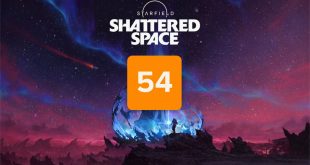
When it comes to creating a high end graphics card, very few companies can match Asus. Today we are looking at their new Matrix HD7970 Platinum graphics card, which features a hefty metal, dual fan cooler and out of the box overclocked settings. This card uses a 20 phase VRM which takes power from two 8 pin PCIe power connectors. The VRM features a sophisticated load line calibration system with manual LLC factor control which helps counter V-Droop. Is this the ultimate HD7970? Can it take the crown from the class leading Sapphire HD7970 6GB Toxic Edition which we reviewed several months ago?
The Asus Matrix HD7970 Platinum is designed for the hard core overclocking audience, including that small audience who want to use Liquid Nitrogen to push the hardware to the limits. The PCB features an LN2 model switch which loads an extreme cooling optimised BIOS. The company also include a LN2 optimised VRM heatsink in the package.
There is also a fan override button on the board which increases fan speed to 100%, bypassing any software interference.
The board also features VGA Hotwire, these are labelled points on the PCB which allow the user to equip the card with manual voltage tuning circuitry. This card is closely tied into a special version of GPU tweak, which is supplied on the optical disc in the package. The card is equipped with a whopping triple slot cooler which is designed in traditional ‘Republic Of Gamers' colours.
| Product | AMD HD7970 GHZ Ed Asus Matrix HD7970 Platinum Graphics Card |
AMD HD7950 | AMD HD7870 | AMD HD7850 |
| Core Clock speed | 1050mhz (1100mhz) |
800mhz | 1000mhz | 860mhz |
| Transistors | 4.31 billion | 4.31 billion | 2.8 billion | 2.8 billion |
| Stream Processors | 2,048 | 1,792 | 1,280 | 1,024 |
| Compute Performance | 3.79 TFLOPS | 2.87 TFLOPS | 2.56 TFLOPS | 1.76 TFLOPS |
| Texture Units | 128 | 112 | 80 | 64 |
| Texture Fillrate | 134.4 GT/s 140.8 GT/s |
89.6 GT/s | 80 GT/s | 55.0 GT/s |
| ROPs | 32 | 32 | 32 | 32 |
| Pixel Fillrate | 33.6 GP/s 35.2 GP/s |
25.6 GP/s | 32.0 GP/s | 27.52 GP/s |
| Z/Stencil | 128 | 128 | 128 | 128 |
| Memory Type | 3GB GDDR5 | 3GB GDDR5 | 2GB GDDR5 | 2GB GDDR5 |
| Memory Clock | 1,500mhz (1,650mhz) |
1,250mhz | 1,200mhz | 1,200mhz |
| Memory Data Rate | 6 GBps (6.6Gbps) | 5.0 Gbps | 4.8 Gbps | 4.8 Gbps |
| Memory Bandwidth | 288 GB/s (316.8GB/s) | 240 GB/s | 153.6 GB/s | 153.6 GB/s |
ASUS have overclocked the Asus Matrix HD7970 Platinum to 1,100mhz (boost clock). This is considerably slower than the 1,200mhz ‘Lethal Boost' setting available on the Sapphire HD7970 6GB Toxic Edition.
Unlike Sapphire however, Asus have decided to cut the cost a little by holding true to AMD’s reference specifications, incorporating 3GB of GDDR5 memory, not 6GB. Asus have overclocked the 3GB of GDDR5 on this board to 1,650mhz (6.6Gbps effective).
The ‘Non' Platinum version of this card is clocked at a 1050mhz boost clock speed.
 KitGuru KitGuru.net – Tech News | Hardware News | Hardware Reviews | IOS | Mobile | Gaming | Graphics Cards
KitGuru KitGuru.net – Tech News | Hardware News | Hardware Reviews | IOS | Mobile | Gaming | Graphics Cards




Thats another beautiful card for AMD. Quite a few really high end, loaded boards for 7970 lovers.
Good review thanks.
ASUS deserve a lot of credit for this – I love it when companies go nuts on the design for the high end audience. Im tempted to go for this later in the year, but I agree – the Sapphire HD7970 6GB Toxic Edition looks to be a slightly better deal all round.
Zardon – top review bro. I still think the GTX680 is the best value for money high end card on the market however. you can pick up a killer one for £380
Im not a fan of triple slot coolers – I think in this case it has helped ASUS lower the noise levels which is welcomed, but they are huge cards and take up so much space in a case. I think Sapphire 6GB Toxic is still the best, but the extramemory really isn’t needed for most people/situations